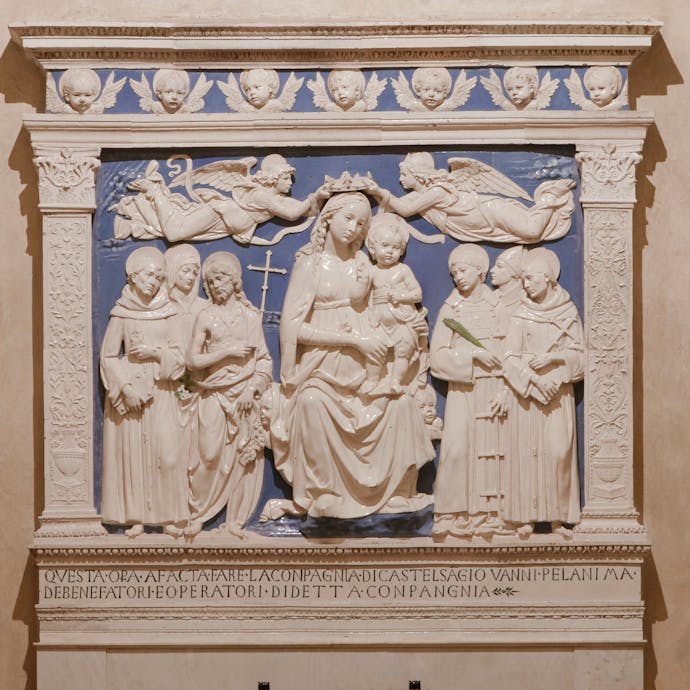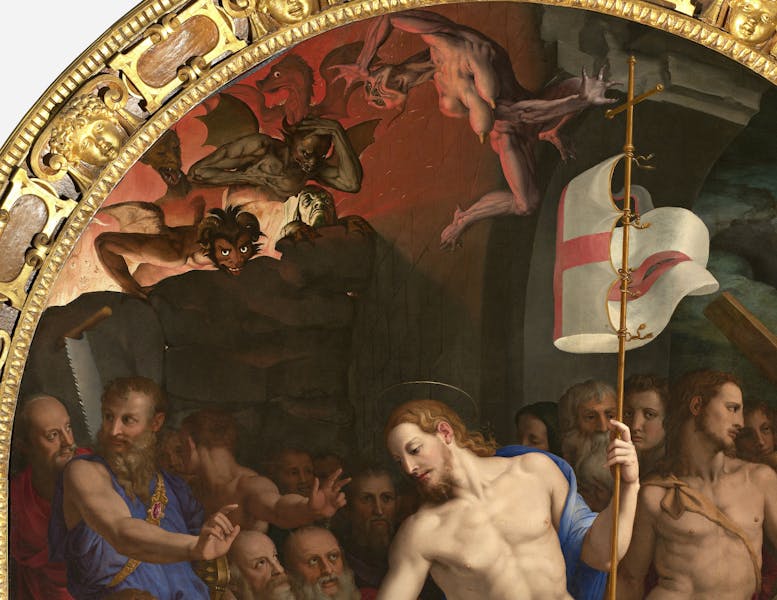
Medici Chapel
This rectangular chapel has a twin cross-vaulted ceiling and ends in a square chancel. Intended for novices, it was built between 1435 and 1445 thanks to the generosity of Cosimo de' Medici, who became its patron.
The chapel's association with the Medici is revealed by its dedication to St. Cosmas and St, Damian, the family's patron saints, depicted in the stained-glass window of c. 1450 attributed to Alesso Baldovinetti. The saints also figured in Filippo Lippi's altarpiece depicting the Madonna Enthroned, now in the Uffizi, which was replaced in 1810 by the Virgin in Majesty, a glazed terracotta work created by Andrea and Giovanni della Robbia c. 1495.

Andrea e Giovanni della Robbia, Madonna col bambino tra angeli e santi, 1495 circa. Santa Croce, Noviziato, cappella Medici
The chapel's Renaissance structure, probably designed by Michelozzo, has remained virtually unchanged over the years, but its furnishings have been altered on many occasions, including, since 1815, with works of art removed from churches and convents suppressed in the Napoleonic era. The chapel's present aspect is the result of a project developed in 2014 to keep works difficult to move such as Bronzino's Descent of Christ into Limbo or Francesco Salviati's Deposition from the Cross safe from the threat of flood damage.

When Galileo Galilei died in 1642, he was buried in the space to the left of the chancel. His remains were only moved to a monumental tomb in the church in 1737.